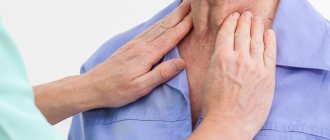Numbness is an abnormal sensation that can occur in any part of the body, but is most often felt in the arms and legs. The symptom of numbness is often accompanied by tingling, and can be quite harmless, for example, in the hands when cooling, to a sign of a serious, life-threatening condition. Numbness is a fairly common symptom. Numbness of the limbs is often accompanied by an emotional context with a feeling of detachment and decreased emotional coloring, which is usually a sign of depression. In a physical context, numbness is usually the result of damage, poor circulation, or pathological changes to certain nerves.
In addition, there may be periodic attacks of numbness and tingling due to the presence of certain health problems, such as neuroses or a migraine attack. Also, episodes of numbness can occur during attacks of fear caused by the anticipation of life-threatening events, and in such cases the numbness is caused by shallow breathing and most often affects the fingers and the mouth area.
Numbness of the hands is manifested by a feeling of loss of sensation in the hands; patients often call this condition “asleep” hands. Numbness may be accompanied by a tingling sensation from the needle. Often such numbness occurs after sleeping with your hands under your head. Numbness in the hands is usually caused by carpal tunnel syndrome, which causes compression of the median nerve. Most often, carpal tunnel syndrome is caused by compression of the nerve in the carpal tunnel. In addition, numbness in the hands can be caused by injuries, hypothermia, or systemic diseases such as diabetes. If numbness of the hands is accompanied by shortness of breath, nausea, and palpitations, then this may be a sign of acute, life-threatening conditions and requires emergency medical attention.
Numbness in the legs is a loss of feeling or sensation in the legs, resulting from disruption of communication between the peripheral nerves and the central nervous system. Typically, numbness in the legs is associated with poor circulation in the lower extremities. This numbness most often occurs when sitting cross-legged for a long period of time. In such cases, getting up and walking can relieve the numbness after a while. But numbness in the legs can also be a sign of serious damage to nerve fibers due to mechanical factors (disc herniation, radiculopathy) or nerve damage due to somatic diseases.
Causes
Numbness can be a sign of a wide range of diseases or conditions that involve restricted blood flow or nerve damage.
Temporary numbness can be caused by any activity that puts prolonged pressure on the nerve(s), such as sitting cross-legged or cycling long distances. Numbness can also occur due to moderate to severe orthopedic or vascular pathology, as well as conditions and diseases that lead to damage to the nervous system. In some cases, numbness is a symptom of a life-threatening condition that requires emergency medical attention.
Cardiovascular causes of numbness
Numbness can be caused by a lack of blood flow to a certain area due to conditions such as:
- Arteriovenous malformations
- Buerger's disease
- Deep vein thrombosis (a blood clot in the legs can break off, which can lead to pulmonary embolism in the lungs, heart attack, stroke)
- Frostbite
- Diseases of peripheral arteries (vascular atherosclerosis, in which narrowing of the arterial bed occurs).
- Raynaud's syndrome, in which persistent spasm of peripheral vessels occurs and blood circulation in the distal extremities is impaired. Vasospasm is usually triggered by cold or sometimes stress.
Orthopedic causes of numbness
Numbness may also occur due to minor or serious orthopedic conditions that cause nerve damage:
- Whiplash neck injury
- Bone fractures
- Carpal tunnel syndrome
- Degenerative diseases of the intervertebral disc
- Herniated disc
- Compression pinched nerve
- Osteoporosis
Neurological causes of numbness
Numbness due to nerve compression or nerve damage may be due to conditions such as:
- Alcoholism
- Brain tumors
- Diabetic neuropathy
- Encephalitis
- Heavy metal poisoning such as lead poisoning
- Hypothyroidism
- Multiple sclerosis
- Peripheral neuropathy
- Spinal cord injury or tumor
- Stroke
- Systemic lupus erythematosus
- Myelitis
- Myelopathy
- Vitamin B12 deficiency
Numbness during pregnancy
Pregnant women face many changes in the body, and numbness is one of them. Some pregnant women develop carpal tunnel syndrome and it is believed to be due to water retention in the body during pregnancy.
As the fetus develops, fluid accumulates in the body, tissues swell, including in the wrist area, compression of the median nerve occurs and carpal tunnel syndrome develops. Symptoms of carpal tunnel syndrome are more pronounced in the morning hours, as fluid accumulates in the body at night. As a rule, carpal tunnel syndrome in pregnant women heals on its own after delivery.
Numbness in children
There are many reasons why children may experience numbness in different parts of the body. Eating disorders, lack of vitamins and minerals can cause numbness in the lower extremities, this is especially typical for a deficiency of B vitamins. Sports injuries can also cause numbness. Therefore, in childhood, parents need to pay attention to children’s complaints of numbness, which lasts more than a few minutes and may be a sign of damage to ligaments, tendons or bone fractures. Often, anxiety in childhood can be a source of numbness in the lips and face.
How to help yourself with tingling joints
If the tingling sensations recur, listen to your body. You may also notice other unpleasant symptoms, such as morning stiffness. If the joints tingle only occasionally, complications can be prevented with the help of a special diet and vitamin therapy. Add these joint-healthy foods to your diet:
- Red fish and flax seeds. They are high in Omega-3, a substance that reduces inflammation and slows down the wear and tear of cartilage.
- Celery salad, juice or infusion. This product is a powerful antioxidant and is also used to remineralize and detoxify the body.
- Ginger. Regardless of the form, be it infusion, powder or spice, the product has a strong analgesic and anti-inflammatory effect.
- Nettle. It has cleansing properties, so nettle leaves can be rubbed on an affected or tingling joint, or you can add them to a salad.
“One nettle replaces seven doctors,” says popular wisdom. What are the benefits of this well-known plant for the body and joints?
None of the above folk remedies is a panacea for joint diseases. Sometimes tingling can develop into discomfort and constant aching pain, and an MRI will show arthrosis of the joints.
As a rule, in case of such complaints, the doctor orders an x-ray to rule out injury or prescribe effective treatment for osteoarthritis based on the results, and also recommends a detailed blood test. It will show the presence of inflammation in the body and help you draw the right conclusion.
Therefore, do not rush to write off this seemingly harmless symptom as an accident and be vigilant! Some diseases are very insidious and make themselves felt only in advanced stages.
Symptoms
Numbness usually occurs due to poor circulation in a particular area or nerve damage. Sensory disturbances (numbness) can also be the result of infection, inflammation, trauma and other pathological processes. In most cases, numbness is due to non-life-threatening illnesses, but it can also be a sign of a stroke or tumor.
Numbness in the extremities is often associated with pain or may be accompanied by other sensory disturbances such as burning or tingling. Strokes also cause motor and speech disorders. Depending on the cause, numbness may disappear quickly, for example, numbness in the arm , which occurs when a person sleeps with their head on their arm, disappears after a few movements of the arm. Chronic numbness in a leg or arm over a long period of time usually indicates some level of nerve damage, such as due to diabetes or multiple sclerosis. Chronic numbness in the fingers may be due to a pinched nerve, as is the case with carpal tunnel syndrome. In any case, numbness that lasts more than a few minutes merits attention and medical attention. And if a person experiences numbness in the groin area and impaired bladder and bowel function, or there are signs of paralysis, confusion, speech impairment, then in such cases it is necessary to seek emergency medical help.
Symptoms that may accompany numbness:
- Anxiety
- Burning feeling
- Frequent urination
- Increased numbness or tingling while walking
- Itching
- Lower back pain
- Muscle spasms
- Pain in the neck
- Pain in other parts of the body
- Pins and needles sensation
- Rash
- Increased sensitivity to touch
A number of symptoms accompanying numbness may be a sign of serious conditions and this must be taken into account by the doctor, since emergency medical care and necessary medical procedures are often required.
These are the following symptoms:
- Lethargy or momentary loss of consciousness
- Labored breathing
- Difficulty walking
- Dizziness
- Loss of control over voluntary urination or bowel movements
- Visual impairment
- Numbness in the head, neck, back
- Paralysis
- Speech disorders (dysarthria)
- Weakness
Numbness of the leg on the outside
This pathology has a special medical name - paresthesia, and is of a tumor, infectious, neurodegenerative or autoimmune nature. Accompanied by tingling, burning, and pain of varying intensity.
The sensations can be short-lived or long-lasting, of a paroxysmal nature. The most dangerous are long-term sensory disturbances, the cause of which is the course of chronic pathologies: arthritis, osteochondrosis, diabetes and others. Violations of cellular metabolism lead to persistent disruption of nerve impulse conduction.
Diagnosis and treatment
Based on the medical history, study of symptoms and physical examination, the doctor prescribes an examination plan, which includes both instrumental and laboratory examination methods.
To treat numbness, first of all, it is necessary to find out the cause of this symptom. If numbness is associated with circulatory disorders, diabetes or multiple sclerosis, the underlying disease is treated, both with the help of conservative treatment methods and surgical methods (for example, for vascular diseases). For orthopedic problems, such as disc herniation, osteochondrosis, treatment can also be either conservative or surgical (for example, when it is necessary to decompress the nerve root).
Numbness of the leg below the knee
This part of the limb is extremely vulnerable to disorders of the blood vessels and nerve roots. A passive lifestyle and sedentary work can cause pathology. Vascular problems additionally give a burning sensation, loss of sensitivity, cold feet, tingling of the numb area.
Numbness of the right leg is one of the most important signals of sciatic nerve neuropathy, the cause of which is a hernial formation. The symptom intensifies when walking or sitting, and is often accompanied by convulsions.
The same pathologies on the left leg indicate left-sided protrusion of the intervertebral disc. Accompanied by piercing, unexpected pain.
General information
A characteristic feature of the disease is metabolic disorders in skeletal muscle tissue. The muscles of a sick child lose their function partially or entirely, that is, weakness appears in them and the range of movements decreases. The quality of life is significantly reduced. Source: Komantsev V.N., Skripchenko N.V., Sosina E.S., Klimkin A.V. POLYNEUROPATHY AND MYOPATHY OF CRITICAL CONDITIONS IN ADULTS AND CHILDREN: DIAGNOSIS, CLINICAL MANIFESTATIONS, PROGNOSIS, TREATMENT // Modern problems of science and education. – 2012. – No. 5
This pathology usually has a hereditary form and can be diagnosed in children of any age. It is not life-threatening, except in cases where atrophy of the heart muscle and respiratory muscles occurs. Source: https://www.ncbi.nlm.nih.gov/pmc/articles/PMC2796972/ Chris M. Jay, Nick Levonyak, Gregory Nemunaitis, Phillip B. Maples and John Nemunaitis Hereditary Inclusion Body Myopathy (HIBM2) Gene Regul Syst Bio. 2009; 3: 181–190.
The disease has a number of complications:
- development of respiratory failure;
- limited mobility;
- paralysis;
- congestive pneumonia;
- depressive, suicidal mood of the patient;
- increased risk of death.
Treatment methods
Important!
The sooner you start treating a child, the greater his chances of a fairly high quality of life.
Treatment boils down to the following activities:
- injection of adenosine triphosphoric acid (ATP) in courses;
- iontophoresis;
- vitaminization;
- drugs to improve blood circulation;
- massage;
- use of orthopedic correction devices by patients;
- the use of drugs for better neuromuscular conduction;
- hormone therapy;
- and etc.
The hereditary form of the disease cannot be completely cured, but it is possible to specifically eliminate the main symptoms by:
- orthopedic correction;
- regular and breathing exercises.
Sometimes surgery is required. It is aimed at correcting scoliosis that occurs against the background of the underlying disease.
Promising methods for treating myopathy are: the use of stem cells and gene therapy.
Prices
| Name of service (price list incomplete) | Price |
| Appointment (examination, consultation) with a neurologist, primary, therapeutic and diagnostic, outpatient | 1950 rub. |
| Consultation (interpretation) with analyzes from third parties | 2250 rub. |
| Prescription of treatment regimen (for up to 1 month) | 1800 rub. |
| Prescription of treatment regimen (for a period of 1 month) | 2700 rub. |
| Consultation with a candidate of medical sciences | 2500 rub. |
| Transcranial duplex scanning (TCDS) of cerebral vessels | 3600 rub. |
Advantages of contacting SM-Clinic
Our clinic employs some of the best pediatric neurologists in St. Petersburg, doctors of high categories with impressive experience. Your child will be able to undergo diagnostics using modern equipment, undergo laboratory tests without queues and in comfortable conditions. SM-Clinic specialists will develop an optimal treatment plan in a short time, taking into account the individual characteristics of the patient and the form of his disease.
Call us for additional questions and to schedule an appointment.
Sources:
- Komantsev V.N., Skripchenko N.V., Sosina E.S., Klimkin A.V. Polyneuropathy and myopathy of critical conditions in adults and children: diagnosis, clinical manifestations, prognosis, treatment // Modern problems of science and education, 2012, No. 5.
- https://www.ncbi.nlm.nih.gov/pmc/articles/PMC2796972/ Chris M. Jay, Nick Levonyak, Gregory Nemunaitis, Phillip B. Maples and John Nemunaitis Hereditary Inclusion Body Myopathy (HIBM2) Gene Regul Syst Bio. 2009; 3: 181–190.
- https://www.ncbi.nlm.nih.gov/pmc/articles/PMC5575512/ Alessia Nasca, Chiara Scotton, Irina Zaharieva, Marcella Neri, Rita Selvatici, Olafur Thor Magnusson, Aniko Gal, David Weaver, Rachele Rossi, Annarita Armaroli , Marika Pane, Rahul Phadke, Anna Sarkozy, Francesco Muntoni, Imelda Hughes, Antonella Cecconi, György Hajnóczky, Alice Donati, Eugenio Mercuri, Massimo Zeviani
- Recessive mutations in MSTO1 cause mitochondrial dynamics impairment, leading to myopathy and ataxia Hum Mutat. 2022 Aug; 38(8): 970–977.
- https://www.mda.org/disease/congenital-myopathies/diagnosis The Muscular Dystrophy Association (MDA).
Pitsukha Svetlana Anatolyevna Clinic
Author of the article
Pitsukha Svetlana Anatolevna
Doctor of the highest qualification category
Specialty: neurologist
Experience: 25 years
The information in this article is provided for reference purposes and does not replace advice from a qualified professional. Don't self-medicate! At the first signs of illness, you should consult a doctor.










